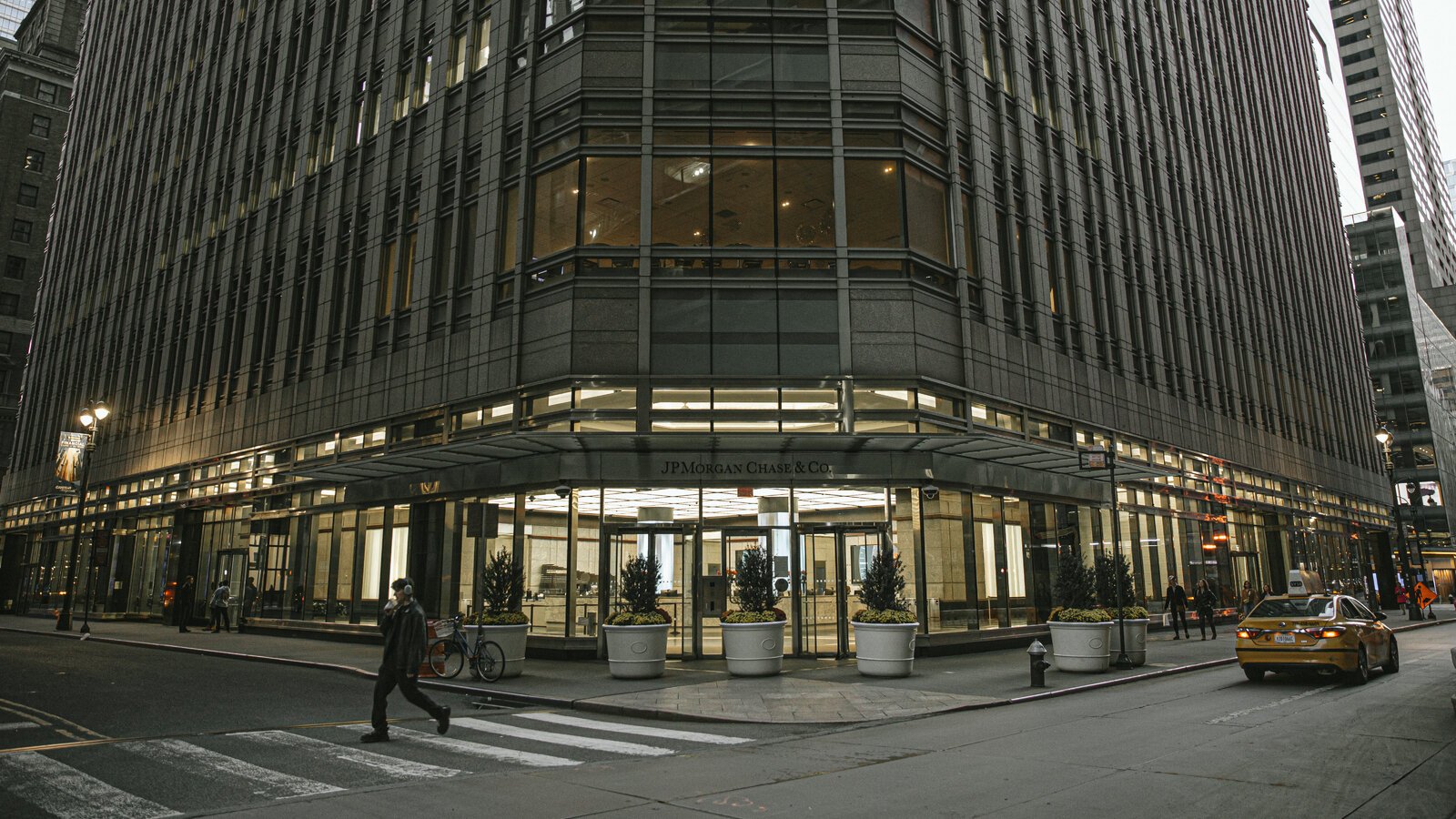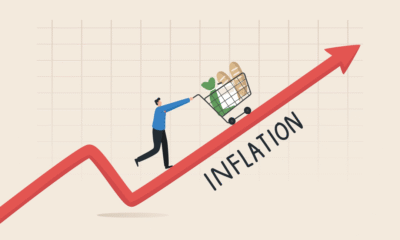Economics
Global Markets React to U.S. GDP Contraction: A Comprehensive Analysis

Introduction to GDP Contraction
Gross Domestic Product (GDP) contraction refers to a decline in the economic output of a country, indicating that its overall economic activity has decreased over a specific period, typically measured quarterly or annually. This contraction signifies that the economy is responding negatively to various factors such as decreased consumer spending, lower investment, and reduced exports, ultimately affecting employment levels and overall economic health. In the context of the global economy, understanding GDP contraction is pivotal, as shifts in the economic performance of major economies like the United States can have far-reaching implications on markets worldwide.
Recent trends in the U.S. economy have shown signs of volatility, prompting concerns among economists and policymakers alike. Prior to the latest GDP report, various indicators suggested a slowdown, including a rise in inflation rates and disruptions in supply chains. These factors, combined with changes in fiscal and monetary policies, led to increased scrutiny on economic data and forecasts. The most recent GDP report revealing contraction has underscored the fragility of the recovery phase following the pandemic-induced economic downturn.
The significance of GDP changes cannot be overstated, particularly regarding their capacity to influence global markets and investor sentiment. A contraction in U.S. GDP may lead to heightened uncertainty in investment decisions, as markets often react to perceived economic instability. Investors closely monitor GDP figures, as they signal economic trends and potential shifts in government policy, affecting everything from stock markets to international trade relationships. In understanding these dynamics, analysts and investors can better navigate the complexities of the global financial landscape, making informed decisions that consider both domestic and international economic factors.
Immediate Market Reactions
The announcement of United States GDP contraction prompted swift reactions across global financial markets. Major U.S. stock indices, including the S&P 500 and Dow Jones Industrial Average, experienced notable fluctuations as investors reassessed the implications of the shrinking economy. On the day news broke, the S&P 500 fell sharply by approximately 2.5%, reflecting a sense of immediate panic among traders. The Dow Jones followed suit, witnessing a drop of around 3%, underscoring the gravity of the situation. The rapid descent in stock prices was fueled by fears of an impending recession, which typically heighten market volatility.
International markets mirrored the turmoil observed in the U.S. For instance, European indices such as the FTSE 100 and the DAX also reported declines, as investors globally reacted to the news. The FTSE 100 saw a decrease of roughly 1.7%, while the DAX recorded a significant fall of approximately 2.3%. This downtrend highlighted a panic-induced market sentiment, as economic uncertainty loomed large across borders.
Additionally, trading volumes spiked significantly, indicating heightened activity as investors rushed to reposition their portfolios in light of the new economic data. Reports noted that trading volume on the New York Stock Exchange exceeded averages by more than 50%, suggesting that many investors were quick to react to the GDP news.
Market sentiment remained pessimistic, with analysts expressing concerns over diminished consumer spending and potential impacts on corporate earnings. This contraction not only intensified fears of a U.S. recession but also prompted discussions about possible monetary policy adjustments by the Federal Reserve. Overall, the immediate market reactions clearly illustrate the interlinked nature of global economies and the profound impact that significant economic announcements can have on investor sentiment and market dynamics.
Sector-Specific Impacts
The recent contraction in U.S. GDP has reverberated across various economic sectors, each exhibiting unique responses to the shifting economic landscape. Financials, technology, consumer goods, and industrials serve as key categories that reflect these varying impacts, revealing both resilience and vulnerability amid economic uncertainty.
In the financial sector, the contraction prompted heightened volatility, with banks experiencing a mixed performance. Institutions that focused on wealth management and investment services tended to fare better, as clients sought guidance in navigating turbulent markets. Conversely, the lending segments faced challenges due to tightening credit conditions and lower demand for loans, reflecting cautious consumer sentiment.
The technology sector showcased its adaptive capacity, with certain firms reporting growth despite the contraction. Companies focusing on cloud computing and cybersecurity services experienced increased demand as businesses prioritized digital transformation and data protection. However, hardware manufacturers faced obstacles, as consumer spending on electronic devices saw a decline, indicating a potential shift in consumer priorities.
In contrast, the consumer goods sector exhibited a more pronounced decline, particularly in discretionary categories such as apparel and luxury goods. Economic uncertainty led to reduced spending, prompting many firms to adjust their inventory levels and marketing strategies. Essentials such as groceries and household items fared comparatively better, indicating resilience in the face of economic pressure, as consumers prioritized basic needs over luxuries.
Industrials, encompassing manufacturing, construction, and transportation, also felt the GDP contraction’s impact. While demand for infrastructure projects remained stable due to government spending initiatives, manufacturers encountered supply chain disruptions and rising costs, affecting profitability. The sector’s performance underscored the importance of strategic planning in an ever-evolving economic environment, steering investor attention towards potential sector rotation opportunities.
The dichotomy of outcomes across these sectors prompts critical reflections on investor strategies. Stocks in resilient sectors may remain attractive, while others facing significant declines might necessitate caution. As the market adjusts to the post-contraction reality, the responsiveness of various sectors will play a crucial role in shaping future investment trends.
International Markets and Currencies
The contraction of the U.S. Gross Domestic Product (GDP) has reverberated across international markets, prompting notable reactions in stock exchanges worldwide. Following the announcement of the GDP decline, many markets experienced heightened volatility as investors reassessed their positions in light of the U.S. economy’s performance. For instance, major European stock indices, including the FTSE 100 and DAX, faced downward pressures as traders anticipated potential repercussions on global trade and economic growth. This sentiment was echoed in Asian markets, where indices such as the Nikkei and Hang Seng also saw declines as fears of reduced U.S. consumer demand permeated investor outlook.
Emerging markets, in particular, are vulnerable to fluctuations in the global economic landscape. The U.S. GDP contraction raised concerns about capital outflows from these economies, as investors seek safe havens amidst uncertainty. Currencies of such emerging markets often face depreciation against the U.S. dollar, which is viewed as a more stable investment during turbulent times. Consequently, nations heavily reliant on exports to the U.S. may need to prepare for a slowdown in trade as consumer spending potentially contracts.
In addition to stock market reactions, currency values have also experienced significant shifts. The U.S. dollar initially strengthened against a basket of currencies, reflecting its status as a global reserve currency and a safe haven. However, the euro and yen showed mixed responses; while the euro depreciated against the dollar due to adjusting growth forecasts within the Eurozone, the yen managed to maintain some stability owing to Japan’s accommodative monetary policies. Observing these dynamics can provide insights into how geopolitical factors intertwine with economic indicators, highlighting the intricate relationship between international markets and U.S. economic performance.
Impact on Interest Rates and Monetary Policy
The recent contraction of the Gross Domestic Product (GDP) in the United States has garnered significant attention, leading to an examination of its implications for interest rates and monetary policy. A decline in GDP often triggers a reevaluation of economic forecasts and can prompt central banks to modify their monetary strategies to stimulate growth. In this context, the Federal Reserve plays a pivotal role, as its decisions regarding interest rates directly impact investment, consumer spending, and overall economic momentum.
Historically, a decline in GDP has led to calls for interest rate cuts, an approach the Federal Reserve may adopt to encourage borrowing and spending. Lower interest rates decrease the cost of loans, thus stimulating economic activity. In response, global investors closely monitor Fed communications and economic data, adjusting their predictions and responses in the marketplace. These alterations can cause ripples through financial markets, affecting everything from bond yields to equity valuations.
Moreover, when the Federal Reserve signals impending rate cuts, it typically influences other central banks’ policies as well. Internationally, central banks may respond by either lowering their rates or implementing quantitative easing measures to maintain competitive monetary conditions. This interconnected nature of global finance means that a contraction in U.S. GDP can lead to a concerted effort among central banks worldwide to inject liquidity into their economies.
In summary, the relationship between GDP contraction and changes in interest rates is crucial for understanding broader economic dynamics. Adjustments in monetary policy, including cuts and quantitative easing, are essential not only for the U.S. economy but also for global markets. Investors must stay abreast of these shifts, as they can significantly influence investment strategies and asset valuations across different regions. Such policies are vital for fostering an environment conducive to economic recovery and stability.
Investor Sentiment and Behavioral Trends
The recent contraction in the U.S. Gross Domestic Product (GDP) has had significant repercussions on investor sentiment, reflecting the intricate relationship between economic indicators and market behavior. During periods of economic distress, such as a GDP decline, investors often exhibit heightened anxiety, leading to panic selling as they seek to mitigate potential losses. This immediate reaction can trigger a cascading effect across financial markets, resulting in increased volatility and rapidly declining stock prices.
Additionally, the phenomenon of ‘flight to safety’ becomes especially pronounced in uncertain economic climates. Investors tend to shift their capital from high-risk assets to safer investments, such as government bonds or gold, which are perceived as more stable during downturns. This behavioral response is rooted in the psychological instinct for risk aversion, where the preservation of capital takes precedence over the pursuit of returns. The reallocation of investment into safer havens can amplify price movements in these assets, sometimes beyond their fundamental values.
Moreover, the contraction in GDP can significantly alter risk appetite among investors. While some may reduce their exposure to equities and other volatile assets, others may see this as an opportunity to capitalize on lower prices. This shift in sentiment creates a divergence where certain investors may adopt a contrarian view, seeking undervalued opportunities, while the broader market tends to react to fear rather than rational analysis. Psychological factors, such as herd behavior and overconfidence, play crucial roles in these dynamics, shaping collective action in markets.
Understanding the interplay between GDP fluctuations and investor behavior is essential for grasping market movements during economic contractions. The impact on sentiment not only drives immediate trading decisions but also influences longer-term investment strategies as investors recalibrate their expectations in light of shifting economic conditions.
Long-Term Economic Implications
The contraction of the U.S. GDP signifies a crucial juncture for both the U.S. economy and the global economic landscape. When a nation as influential as the United States experiences a decrease in economic output, it reverberates through various markets worldwide. The potential for a prolonged recession emerges as a primary concern, not only threatening domestic stability but also posing sustainability challenges for international trade and investment networks.
As the world’s largest economy, any shifts within the U.S. have significant implications on global supply chains and demand. A contraction may lead to reduced consumer spending, affecting trade partners who are reliant on American imports. In turn, this can lead to diminished economic activity in countries that export goods to the U.S., thereby contributing to a cycle of economic slowdown that could affect various regions differently. Specific sectors, such as manufacturing, technology, and commodities, may face heightened pressures as consumer confidence wanes and businesses become more cautious with capital investments.
Furthermore, the outlook for economic recovery remains complex. Policymakers are likely to implement measures aimed at stimulating growth, which could include adjustments in monetary policy, fiscal stimulus packages, and other interventions to foster an environment of investment. These moves are crucial but may take time to yield positive results. The speed and success of recovery efforts will determine the trajectory of not only the U.S. economy but also the global economy at large.
Trends in international investments may shift in response to the U.S. GDP contraction, as investors assess risks and opportunities. Nations might reposition themselves to attract investment that traditionally flowed to the U.S. Therefore, observing these economic parameters is imperative for understanding how global trade patterns might evolve, especially in an interconnected economy where the effects of one nation’s economic health can resonate worldwide.
Case Studies of Past GDP Contractions
Examining historical instances of Gross Domestic Product (GDP) contractions reveals valuable insights into their subsequent effects on global markets. One notable example is the contraction during the Great Recession of 2007-2009. Triggered by a financial crisis primarily in the United States, this downturn led to a global economic slowdown. Stock markets, particularly in developed economies, plummeted as investor confidence waned. The immediate aftermath saw governments implementing monetary policy measures, such as interest rate reductions and quantitative easing, which were aimed at stimulating economic growth. These actions generated varying impacts across markets, yet the interconnectedness of economies was evident as emerging markets also faced declines.
Another pivotal case can be drawn from the early 1980s, specifically the U.S. recession from 1981 to 1982. During this period, significant contractions occurred due to tight monetary policies implemented to combat inflation. The ripple effect was felt globally, with a slowdown in international trade and a deterioration in commodity prices, collectively leading to economic distress, particularly in Latin America. Countries reliant on exports, such as Mexico, experienced severe financial crises, illustrating how GDP contractions in one region can adversely affect economies far beyond their borders.
Additionally, the contraction of 2020, primarily influenced by the COVID-19 pandemic, serves as a contemporary case study. The immediate reaction from global markets was profound; stock indices across leading economies underwent sharp declines. Governments and central banks responded with unprecedented fiscal stimulus and monetary interventions. The resulting wave of liquidity somewhat buoyed markets, yet the long-term implications on sectors such as travel and hospitality were stark and lasting. Each instance of GDP contraction reveals a cycle of market reaction, policy response, and eventual recovery, offering critical lessons for analyzing today’s economic climate.
Conclusion and Future Outlook
The global markets have displayed a remarkable capacity to respond to various economic indicators, none more critical than the recent contraction of the U.S. GDP. The decline signifies not just a domestic challenge, but a potential ripple effect across international financial landscapes. Investors and market analysts are likely to observe heightened volatility as markets adjust to shifts in trade dynamics, consumer confidence, and fiscal policies driven by this contraction.
The initial reactions of equity and bond markets underscore a period of uncertainty as they recalibrate expectations surrounding economic growth. Central banks worldwide may reconsider their monetary policies in light of the U.S. economic downturn. There is growing speculation on interest rate adjustments, which will play a pivotal role in either stimulating growth or exacerbating an economic slowdown. As countries rely on the economic vigor of the United States, they must also strategize in response to potential shifts in their reciprocal trade agreements and investment flows.
In the near to medium term, key indicators for investors to monitor will include employment rates, inflation figures, and subsequent GDP reports from both the U.S. and its trading partners. The interplay between domestic economic policies and global trade relations will be crucial for market stabilization. Moreover, sectors such as technology, consumer goods, and finance are expected to be particularly sensitive to the ongoing adjustments in market sentiment. As the situation evolves, investors should remain vigilant, assessing not only the immediate impacts of the U.S. GDP contraction but also the broader economic implications that could emerge in response.
Overall, the U.S. GDP contraction represents a significant inflection point in the global economic landscape, demanding attention from market participants as they navigate this period of adjustment and recovery.

Finance & Investment
Trade Surveillance in Banking: Lessons from JPMorgan’s $348 Million Fine

Trade surveillance is a critical compliance function in banking and financial services that ensures the integrity of market activities and adherence to regulatory requirements. Effective trade monitoring helps prevent market abuses such as insider trading, front-running, and manipulation, protecting both investors and the broader financial system. Recently, JPMorgan Chase faced a substantial $348 million fine imposed by the Federal Reserve and the Office of the Comptroller of the Currency (OCC) due to inadequate trade surveillance controls. This high-profile penalty serves as a stark reminder to banks worldwide about the vital need for robust monitoring systems. Trade surveillance involves collecting and analyzing massive volumes of trading data in real time to identify suspicious behaviors or patterns that may indicate misconduct. As markets become more complex and trading volumes grow exponentially, financial institutions must invest heavily in surveillance technologies and governance frameworks to meet evolving regulatory expectations and safeguard their reputations.
The JPMorgan Case: What Went Wrong?
JPMorgan Chase’s penalty arose from several shortcomings in its trade surveillance program. Regulators found that the bank’s monitoring systems failed to adequately cover all trading venues and did not effectively analyze the full range of data needed to detect potential misconduct. Gaps in oversight allowed certain trading activities to go unchecked, increasing the risk of market abuses. Additionally, the bank’s controls were insufficient in preventing or identifying misconduct promptly, which is crucial for timely investigation and remediation. These deficiencies pointed to weaknesses in both technology infrastructure and internal governance. The case highlighted the consequences of inadequate surveillance, not only in terms of financial penalties but also reputational damage and potential loss of client trust. For financial institutions, the lesson is clear: trade surveillance cannot be an afterthought but must be a comprehensive, continuously updated program integral to daily operations.
Best Practices for Effective Trade Surveillance Systems
To avoid costly penalties and operational risks, banks need to implement trade surveillance systems that are robust, scalable, and adaptive. Best practices include integrating advanced analytics capable of processing large data sets across multiple trading platforms in real time. Machine learning and artificial intelligence technologies are increasingly being used to improve anomaly detection, reduce false positives, and provide compliance teams with actionable insights. Comprehensive surveillance programs also require strong governance frameworks that ensure clear roles, responsibilities, and accountability within the institution. Regular audits and continuous improvement cycles help identify gaps and adapt to new market practices or regulatory changes. Employee training and cultivating a compliance-oriented culture are equally important to ensure that staff understand surveillance requirements and actively support adherence. Transparency in reporting and effective communication with regulators can further enhance a bank’s ability to manage compliance risks proactively.
Technology’s Role in Enhancing Trade Surveillance
The complexity of modern financial markets demands that trade surveillance leverages cutting-edge technology solutions. Automated systems can monitor millions of trades, cross-referencing data from various sources such as order books, messaging systems, and market data feeds. AI-powered algorithms identify suspicious patterns that human monitors might miss and prioritize alerts for compliance teams to investigate. These technologies not only improve detection speed but also help reduce the burden of manual reviews, allowing staff to focus on high-risk cases. Additionally, cloud computing and big data architectures enable scalable storage and processing power essential for handling the volume and velocity of trade data. Implementing these technological advancements positions banks to meet stringent regulatory standards while maintaining operational efficiency and competitive advantage.
Strategic Takeaways for Banks and Financial Institutions
The JPMorgan fine underscores that trade surveillance is a critical area where banks cannot afford complacency. Financial institutions must treat compliance as a strategic priority, allocating sufficient resources to technology, people, and processes. Proactive investment in surveillance infrastructure not only reduces the risk of regulatory penalties but also enhances trust among clients and investors. Moreover, comprehensive trade monitoring helps detect internal control weaknesses and potential operational risks early, preventing larger issues. Institutions should conduct regular risk assessments to identify vulnerabilities and tailor surveillance parameters accordingly. Collaboration with regulators and industry groups can provide insights into emerging threats and best practices. Ultimately, integrating trade surveillance into the core of banking operations fosters a culture of integrity and resilience that benefits the institution and the financial markets as a whole.
Conclusion: Compliance as a Competitive Advantage
In conclusion, the JPMorgan Chase $348 million fine serves as a powerful cautionary tale for the banking sector, emphasizing the critical importance of effective trade surveillance. As financial markets evolve and regulatory scrutiny intensifies, banks must invest in sophisticated monitoring systems supported by advanced analytics and a strong compliance culture. Trade surveillance is not merely a regulatory obligation but a strategic tool that protects market integrity, strengthens client relationships, and mitigates operational risks. By learning from high-profile cases like JPMorgan’s, financial institutions can enhance their surveillance capabilities, avoid costly fines, and maintain their competitive edge in a complex and rapidly changing industry landscape. For banks committed to excellence, compliance and innovation must go hand in hand to build sustainable, trustworthy financial services for the future.
Economics
Asia’s Private Credit Boom: What It Means for Retail Investors

The Asia Pacific region is witnessing an extraordinary surge in private credit, transforming the financial landscape significantly. Private credit refers to direct lending to companies outside public markets, and over the last decade, this sector’s assets under management have grown from around $500 million to nearly $2 trillion. This rapid expansion is largely driven by emerging markets such as India and Australia, where businesses increasingly seek alternative financing solutions beyond traditional bank loans and public debt offerings. Historically, private credit has been dominated by institutional investors including pension funds and private equity firms. However, the landscape is evolving as retail investors gain access to this asset class through changing regulations, fintech platforms, and increased market demand. The expanding private credit market now offers retail investors an opportunity to diversify their portfolios and participate in an asset class that has demonstrated strong returns and resilience.
Why Private Credit Appeals to Retail Investors
Private credit has grown in popularity due to its potential to offer higher returns compared to traditional fixed-income investments such as government bonds or corporate debt. This is because private credit involves lending to companies with less liquidity and higher credit risk, factors that typically command a premium in yields. Retail investors often face challenges like low interest rates on savings and volatile stock markets, making private credit an attractive alternative for income generation and diversification. The growing involvement of financial giants such as JPMorgan Chase, which has recently allocated over $50 billion into the Asia Pacific private credit market, highlights the confidence that institutional investors have in the asset class. This institutional interest helps validate the opportunity for retail investors to explore private credit as part of a balanced investment strategy that supports both income goals and risk mitigation.
Regional Drivers Behind Asia’s Private Credit Boom
Asia’s private credit growth is closely tied to specific market conditions and regulatory environments within the region. In India, the tightening of banking regulations and a rise in non-performing assets have created a financing gap that private credit funds are actively filling. This has allowed companies to access capital through more flexible and tailored lending arrangements. Meanwhile, Australia’s advanced financial system and regulatory framework support a vibrant ecosystem of private credit funds and alternative lending platforms. These developments offer retail investors in these markets a variety of ways to participate in private credit. Investors can access this asset class through private debt mutual funds, alternative asset management platforms, and regulated digital lending marketplaces. Nevertheless, understanding the regulatory landscape and investment vehicle structures is critical to ensuring compliance and aligning investments with personal risk tolerance.
Key Risks and Considerations for Retail Investors
While private credit offers appealing opportunities, it is important for retail investors to be aware of its unique risks and challenges. Unlike publicly traded securities, private credit investments often involve longer lock-in periods during which liquidity is limited. This means investors may not be able to access their funds quickly, which could be a disadvantage for those requiring flexible cash flow. Additionally, private credit carries credit risk, meaning the possibility of borrower default can impact returns. Transparency is typically lower in private credit compared to public markets, so investors should diligently assess the quality and track record of the fund managers or platforms offering these investments. Understanding the underlying borrower profiles and loan terms is essential to mitigate potential losses. Fees can also be higher due to the complexity involved in underwriting and managing private loans. For these reasons, retail investors should perform comprehensive due diligence, seek professional advice, and only allocate a suitable portion of their portfolios to private credit.
The Role of Education and Professional Guidance
Given the complexities of private credit investing, education and expert advice are indispensable for retail investors. Keeping abreast of regulatory changes, market trends, and emerging opportunities is vital to making informed decisions. Awareness of how alternative investments are regulated in different countries within Asia Pacific helps avoid compliance issues and ensures access to legitimate investment products. Many financial advisors recommend that retail investors allocate a moderate portion of their investment portfolios to private credit as a way to enhance income and reduce correlation with traditional asset classes. However, this allocation should reflect an investor’s financial goals, risk appetite, and liquidity needs. Partnering with experienced fund managers or licensed investment platforms can provide additional safeguards and insights into this relatively complex market.
Supporting Regional Economic Growth Through Investment
Investing in private credit is not only about financial returns; it also plays an important role in supporting economic growth in Asia Pacific. Private credit financing helps small and medium enterprises (SMEs), startups, and infrastructure projects secure the capital they need to expand operations, innovate, and create jobs. Retail investors who participate in this market contribute indirectly to these positive economic outcomes, fostering development and entrepreneurship across the region. This dual benefit of combining financial gains with social impact adds an appealing dimension to private credit investment. It allows investors to align their portfolios with broader economic progress and community development goals, enhancing the meaning and satisfaction derived from their investments.
Conclusion: Unlocking Opportunities in Asia’s Private Credit Market
In summary, the Asia Pacific private credit boom offers an exciting and valuable opportunity for retail investors ready to explore alternative asset classes. The rapid market growth, strong institutional backing, and improving regulatory frameworks create a conducive environment for investment. However, retail investors must remain cautious and informed, understanding the risks related to liquidity, credit, and transparency. A well-researched and diversified approach, combined with professional guidance, can help investors unlock the benefits of private credit while managing potential downsides. As private credit continues to mature and gain accessibility, it is expected to become a vital part of diversified investment portfolios, offering both attractive financial returns and meaningful economic impact across the region.
Investing
Global Investor Outflows from U.S. Stocks & Dollar

In a shift that is sending ripples across financial markets, institutional investors around the world are pulling back from U.S. equities and reducing exposure to the U.S. dollar, signaling a significant change in sentiment toward American assets. According to the latest Bank of America Global Fund Manager Survey, global investors are now the most underweight on U.S. stocks in more than two decades, with the dollar facing similar skepticism as a long-term safe-haven asset. This transition is being fueled by multiple converging factors, including geopolitical instability, growing U.S. fiscal deficits, trade tensions, and an increasingly favorable investment climate in Europe and select emerging markets. For investors, economists, and policymakers alike, this trend represents a rebalancing of global capital flows that could reshape market dynamics in the months ahead.
Investor Sentiment Toward U.S. Markets Hits Multi-Year Lows
The Bank of America survey, considered a key barometer of global institutional sentiment, reveals that fund managers have turned heavily underweight on U.S. stocks and the dollar, preferring instead to rotate their portfolios into European and Asian equities. The survey showed that 36% of participants are now net underweight U.S. equities—the highest level since 2003. At the same time, positioning on the dollar turned net negative for the first time in over five years, with investors citing mounting fiscal concerns, valuation extremes, and weakening macroeconomic indicators.
The U.S. equity market, especially the tech-heavy NASDAQ, has experienced an extraordinary bull run over the last several years. But now, investors are questioning the sustainability of elevated valuations, particularly as economic growth slows, earnings forecasts are revised downward, and inflation remains persistently above target. Many portfolio managers believe the best returns may no longer be found in U.S. assets alone.
Rising U.S. Debt and Fiscal Deficits Raise Red Flags
A key driver of investor caution is the ballooning U.S. fiscal deficit. The Congressional Budget Office (CBO) projects that the U.S. federal deficit will reach over $1.8 trillion this year, driven by increased government spending, rising interest costs, and lower-than-expected tax revenues. The national debt is now projected to exceed 125% of GDP by 2030, raising serious questions about long-term fiscal sustainability.
Investors fear that soaring U.S. debt levels could lead to a loss of confidence in Treasury securities, pushing yields higher and triggering volatility in global credit markets. This concern is magnified by the growing political polarization in Washington, which has led to repeated debt ceiling standoffs and policy gridlock. As a result, some asset managers are choosing to diversify their bond portfolios with sovereign debt from countries like Germany, Canada, and Australia—nations viewed as having stronger fiscal discipline.
Geopolitical Tensions Erode Dollar Safe-Haven Appeal
The traditional role of the U.S. dollar as a global safe-haven currency is also being called into question. With the U.S. now embroiled in rising geopolitical conflicts, including its military engagement in the Middle East and an escalating trade war with China, the perception of the dollar as a “neutral” or stable currency is beginning to fade. Several countries, particularly in the Global South, have voiced frustration over the dominance of the dollar in international trade, and some have even accelerated efforts to settle trade in alternative currencies such as the euro, yuan, or local currency blocs.
In response, central banks in emerging markets are reducing their U.S. dollar reserves and increasing holdings in gold and non-dollar currencies. This trend, while gradual, is gaining momentum and contributing to the dollar’s underperformance against a basket of global currencies. The U.S. dollar index (DXY) has declined by nearly 6% year-to-date, reflecting both diminished investor confidence and a broader reconfiguration of reserve management strategies.
Attractive Valuations Abroad Drive Capital Outflows
While risks in the U.S. are mounting, attractive investment opportunities abroad are also contributing to the outflow of capital from American markets. European equities, particularly in sectors like green energy, luxury goods, and financial services, are seeing renewed interest thanks to relatively low valuations and improving macroeconomic stability. The recent ECB rate cuts and Eurobond discussions have added to optimism about the region’s fiscal and financial integration.
In Asia, countries like India, Indonesia, and Vietnam are emerging as new hotspots for foreign direct investment and equity inflows. These economies offer robust growth prospects, younger demographics, and increasingly tech-driven industries. Additionally, Japan’s bond market is seeing increased institutional buying, as long-term yields rise in response to the Bank of Japan’s policy changes.
This global diversification strategy is not just about seeking higher returns—it’s also about managing risk. Investors are increasingly looking to balance their portfolios geographically, reducing dependence on any single region and hedging against macroeconomic shocks that may be specific to the U.S.
Currency Hedging and Diversification as Defensive Strategies
In response to the dollar’s volatility, many fund managers are now engaging in currency hedging strategies to protect their portfolios. Currency ETFs, options, and forward contracts are being used to minimize the downside risk of a weakening dollar. At the same time, global investment funds are ramping up their exposure to non-dollar-denominated assets, including eurozone corporate bonds, emerging market debt, and local-currency sovereign issues.
Moreover, ESG and green bond markets in Europe and Asia are attracting capital due to their alignment with global sustainability goals. These instruments not only offer diversification but also align with broader institutional mandates on responsible investing.
Implications for U.S. Markets and Monetary Policy
The capital flight from U.S. assets could have significant implications for American markets. A persistent decline in foreign demand for U.S. Treasuries may force the Federal Reserve to intervene more frequently in the bond market to maintain liquidity and control yields. At the same time, a weaker dollar could contribute to imported inflation, complicating the Fed’s efforts to bring core inflation back within its target range.
On the equities side, if investor outflows persist, U.S. companies may face higher capital costs and declining valuations, particularly in sectors that rely heavily on foreign investment or exports. Domestic pension funds and institutional investors may need to fill the gap left by global investors, which could further alter asset allocation strategies and influence corporate financing decisions.
A New Era of Global Capital Rotation
The growing shift away from U.S. stocks and the dollar signals the beginning of a new era in global investing, one defined by diversification, geopolitical hedging, and currency rebalancing. While the U.S. remains a central player in global finance, the days of unquestioned dominance are beginning to fade, as investors embrace a more nuanced and distributed view of risk and opportunity.
For market participants, staying agile in this environment means tracking global fund flows, monitoring geopolitical developments, and reassessing the traditional U.S.-centric portfolio model. As capital continues to flow into European and Asian markets, the future of global finance is being rewritten—and those who adapt early may find themselves ahead of the curve.
-

 Finance & Investment6 months ago
Finance & Investment6 months agoEmerging Markets to Watch in 2025: Opportunities and Risks
-

 Technology and Finance8 months ago
Technology and Finance8 months agoThe Future of Quantum Computing in Financial Modeling and Trading
-

 Finance7 months ago
Finance7 months agoUSA Market Trends & Global Finance Insights
-
Finance7 months ago
Navigating Retirement in the Gig Economy: Challenges and Solutions
-

 Finance8 months ago
Finance8 months agoNavigating Personal Finance in the Age of Inflation and High Interest Rates
-

 Investing & Finance8 months ago
Investing & Finance8 months agoFractional Investing: The Path to Wealth Democratization
-

 Finance7 months ago
Finance7 months agoTop 10 High-Yield Savings Accounts in the US (2025 Edition)
-

 Finance8 months ago
Finance8 months agoDecentralized Finance (DeFi): Opportunity or Risk? A Deep Dive into the Rise of DeFi Platforms and Their Challenge to Traditional Finance



